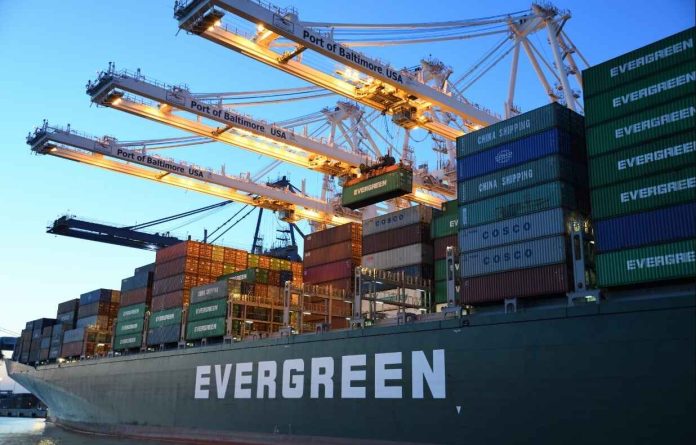As the world becomes increasingly interconnected, international trade has taken on a whole new level of complexity. In this rapidly evolving landscape, ensuring the security of imported goods has become paramount.
Yet, for importers, navigating the intricacies of compliance can feel like deciphering an elaborate puzzle.
Fear not; just as a skilled conductor orchestrates a symphony, these six best practices will harmonize your import processes, fostering a seamless flow while fortifying your cargo against unforeseen risks.
1. Understanding ISF Requirements
The acronym “ISF” may seem like an enigma to many in the vast ocean of international shipping. To master this crucial aspect of international trade, it is essential to have a solid understanding of the ISF requirements. ISF stands for Importer Security Filing, and it is an essential part of the US Customs and Border Protection’s (CBP) strategy to enhance supply chain security.
But what is ISF in shipping, and why is it crucial for importers? Think of it as a thorough background check for your cargo before it sets sail. Just as you would want to know the passengers on a flight, the CBP wants to know about the contents of the cargo arriving at US ports. ISF requires importers to provide specific information about their shipments, including details about the cargo, vessel, and parties involved.
According to Magaya, it is also known as 10+2. The phrase “10+2” describes how it needs 10 data items before cargo is loaded and two extra elements at least 24 hours before the ship arrives at a US port. Thus, before cargo is put onto a ship bound for the US, a finished ISF must be delivered to CBP at least 24 hours beforehand.
Another crucial piece of information is the Bill of Landing (BL), which is a shipping document used while transporting cargo by sea. According to Daily Logistics, each filing should correspond to a single importer. Therefore, if multiple Bill of Lading (BL) information belongs to a single shipment arriving on one vessel/voyage, they can be included in a single filing by the importer.
The purpose behind all these requirements, including cross border shipping, is to enable the CBP to assess potential security risks associated with incoming shipments. By understanding the contents, origins, and parties involved, the CBP can proactively identify and address any potential threats to national security or smuggling attempts.
2. Timely Filing
When it comes to Importer Security Filing, time is of the essence. Timely filing is not just a bureaucratic formality but a critical aspect of ensuring a smooth and secure flow of goods. To master ISF, importers must prioritize meeting filing deadlines to avoid penalties, delays, and potential disruptions in their supply chain.
The 24-hour rule serves as the cornerstone of timely filing. Importers must submit the necessary information to the US Customs and Border Protection (CBP) no later than 24 hours before the vessel departs from the foreign port.
This deadline allows CBP to perform thorough risk assessments and make informed decisions about cargo inspection and clearance. Also, for each instance of inaccurate, incomplete, or delayed filing, CBP has the authority to impose liquidated damages amounting to $5,000 per violation.
To meet this deadline consistently, importers must establish efficient processes and maintain open lines of communication with their suppliers, freight forwarders, and customs brokers.
3. Collaborating with Freight Forwarders and Customs Brokers
In the intricate world of Importer Security Filing, collaboration is key to success. Importers can significantly enhance their ISF process by forging strong partnerships with freight forwarders and customs brokers. They bring valuable expertise and insights to the table, ensuring a seamless flow of information and compliance with regulatory requirements.
Freight forwarders act as intermediaries between importers and transportation carriers, handling the logistics and documentation aspects of international shipments. Engaging a reliable and experienced freight forwarder can greatly simplify the process.
Likewise, customs brokers specialize in navigating the complexities of customs regulations and procedures. They possess an in-depth understanding of ISF requirements and can provide importers with invaluable assistance in preparing and filing the necessary documentation accurately and efficiently.
4. Data Verification and Validation
To master Importer Security Filing and ensure a smooth flow of goods, importers must prioritize data verification and validation as a crucial best practice. This practice involves meticulously reviewing and confirming the accuracy of the information provided in the filing.
Importers should establish robust processes for data verification, ensuring that all required fields are filled correctly and that the information aligns with the corresponding shipping documents. Furthermore, it is essential to validate the data against the latest regulations and guidelines provided by the US Customs and Border Protection (CBP).
Leveraging technology and automated systems can greatly facilitate data verification and validation. According to the Research and Markets report, there are software that are built for data sharing and are known as electronic data interchange (EDI) software.
Using a consistent format for transferring business information is helpful and can be used to share business documents efficiently. Purchase orders and invoicing are the two main transactions that happen most frequently. Therefore, such integrated software solutions systems can help importers cross-reference the provided data with other sources.
5. Document Management and Record-Keeping
Meticulous document management and diligent record-keeping are vital to a successful and compliant import process. Mastering ISF requires importers to establish robust systems for organizing, storing, and retrieving essential documents related to their shipments.
Effective document management starts with identifying and categorizing the relevant documents. It includes bills of lading, commercial invoices, packing lists, ISF filings, and any other supporting documentation.
Accurate record-keeping is not only crucial for compliance but also serves as a valuable resource for future reference and analysis. Importers should maintain records of the filings, correspondence with customs authorities, and any relevant communication with stakeholders in the supply chain.
6. Compliance Monitoring and Auditing
Compliance monitoring and auditing are crucial best practices for importers aiming to master Importer Security Filing. These practices involve ongoing surveillance of the ISF process and conducting periodic audits to ensure adherence to regulatory requirements.
Importers should establish a robust compliance monitoring system that regularly reviews their ISF filings for accuracy, completeness, and timeliness. It includes conducting internal checks to verify that the submitted data aligns with the actual shipment details and complies with the latest guidelines provided by the US Customs and Border Protection (CBP).
Automation and technology can be valuable allies in compliance monitoring. Importers can utilize specialized software or integrated systems that automatically cross-check data, generate error reports, and provide alerts for potential compliance issues.
Importers Must Prioritize Mastering the ISF Process
Mastering Importer Security Filing is a crucial endeavor for importers seeking to secure their supply chain and navigate the complexities of international trade. By embracing these best practices, importers can confidently navigate the ISF landscape, streamlining their import processes and safeguarding their cargo against potential risks.
Mastering ISF is not just a matter of compliance but a strategic advantage that propels importers toward success in the ever-evolving world of international trade.



































